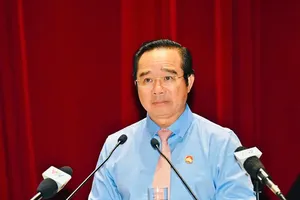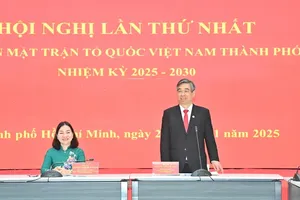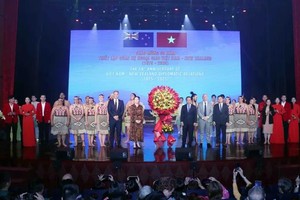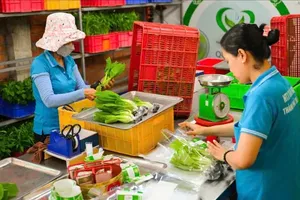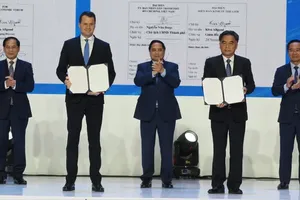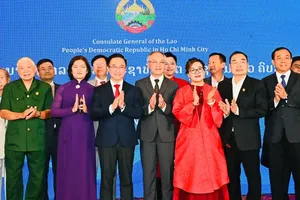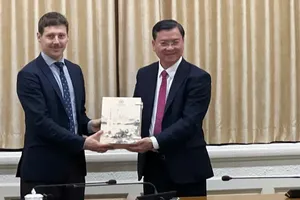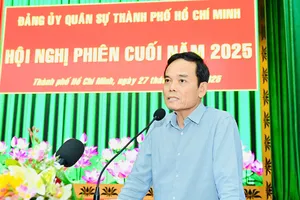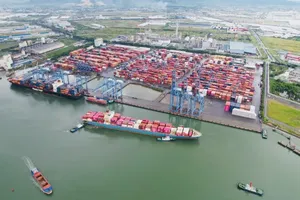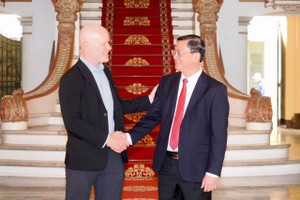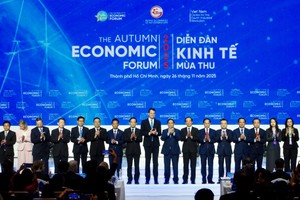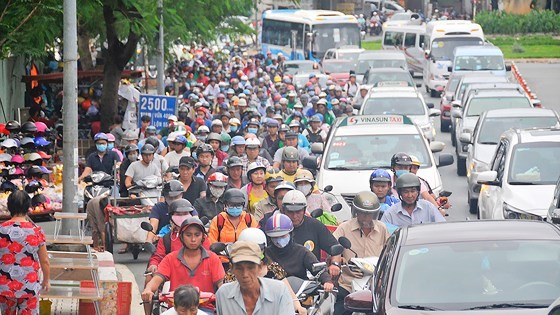
Overloading makes traffic controlling, construction works difficult and not get positive results as expected. Worse, traffic construction works become old-fashion compared with “hot” social development due to overloading.
Lately, spending for traffic construction makes up a big sum in HCMC. Logically, spending for building a flyover or a tunnel to tackle gridlocks is up to some hundreds of billions of Vietnamese dong each.
For instance, An Suong Tunnel in District 12 connecting Truong Chinh Street with National Highway 22 opened to the traffic in the middle of March with the cost of VND500 billion (US$22 million), in a bid to alleviate congestion and lower the number of accident.
The construction of an interchange at My Thuy Roundabout to eliminate daily traffic snarls for bustling Cat Lai Port took up VND837 billion for the first stage.
As per the municipal Department of Transport’s report, the city has 32 traffic construction works waiting for fund.
These are constructions which have to be done by 2020 to tackle “hot traffic spots” include the roads in the height through districts Tan Binh, Phu Nhuan and Binh Thanh costing VND17,500 billion or in districts 12 and Thu Duc with estimated cost of VND15,405 billion; road in the height connecting Tan Son Nhat Airport and Hoang Van Thu Street in districts Tan Binh, Phu Nhuan and Binh Thanh worth VND3,288 billion.
In addition, there are some roads in the belt road No.2 such as the road connecting the National highway No.1 to Nguyen Van Linh Street in District Binh Chanh; from Phu Huu Bridge to intersection Binh Thai – Hanoi Highway in district 9 and from Binh Thai intersection to Go Dua Intersection in Thu Duc District.
Asides from that, maintenance and constructions of the smart traffic controlling center are worth VND6 trillion, bus rapid transit (BRT) No.4 along Pham Van Dong Street worth over VND1.6 trillion and buying new bus fleet are waiting for funding.
City leaders beefed up efforts to attract more funding for construction of roads and maintenance work but it could not meet the demand. Speaking at the opening ceremony of the Party Committee meeting took place last year, Party Chief of Ho Chi Minh City Nguyen Thien Nhan said that the city was being in a lack of roads.
As per the planning project approved by the Prime Minister in 2010, one square kilometer of urban land must have 10km road.
However, at present, the city has 1. 98 kilometer road per one square meter land accounting for 20 percent. At this speed, it takes 167 years for HCMC to achieve urban traffic standard.
Also as the project by 2025, the city’s population will be 10 million; yet, currently, it is 13 million. With the current development, more people will flock to the city to work and live in the future.
In 2017, HCMC spent over thousands of billions of Vietnam dong building flyovers and road expansion; yet traffic condition has not improved basically. Moreover, HCMC chopped down 100 trees including old trees in Gia Dinh park for building flyovers and road expansion.
Furthermore, HCMC has spent tens of thousands of billion Vietnam dong on road and flyover construction in Cat Lai Port to lessen traffic jam there.
Nevertheless, the efforts to diminish traffic congestion have been unrewarded because the number of container vehicles increased by 15 percent annually with 15,000 vehicles travelling in and out the port of now.
Not only the two above-mentioned sites but also all districts in the city have seen the hike of population along with rising travelling demand. Congestion in Nguyen Tat Thanh Street in districts 4, 7, and Nha Be into downtown areas or in Sai Gon River tunnel and Chanh Hung Bridge are examples.
Losses due to traffic jam is a huge sum that city leaders should be taken into account, said economic experts.
